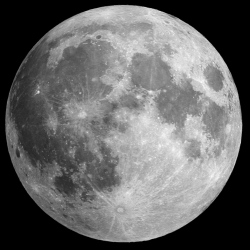
At the end of 2013, China landed its first probe on another body, the Moon. After setting down successfully, the Chang’E-3 spacecraft released a rover called Yutu, or Jade Rabbit. The rover became stationary after the second lunar nighttime after having travelled 114 meters from the landing site.
During that time and since, it gathered initial data from a new area of the Moon for the first time in decades. Some of that data is described in this week’s edition of Science. The landing site was a relatively young crater (30 million to 80 million years old) which has had several smaller craters.
Sampling of the surface materials with the rover’s onboard spectrometers revealed that they are composed of what we would expect, given that the landing site is in the Mare Imbrium, one of the large volcanic features of the Moon: minerals consistent with basalt rocks.
But the intriguing results come from the rover’s on-board Lunar Penetrating Radar, or LPR instrument, which managed to image nearly 500 meters below the Lunar surface, revealing changes in the reflectivity that mark boundaries between distinctive layers.
The first few meters are a mix of lunar dust, or regolith, and large boulders shifted by impacts. Below 10 m, things shift to a layer of what’s likely volcanic basalt, which is followed by a second layer that runs from 35 m to 50 m.
Below that is what the authors interpret as a buried lunar regolith that formed early in the Moon’s history and was then submerged by later lava flows. Several layers of old volcanic floods are below that, and then the authors suggest a deep layer is likely a mix of erupted material and intrusions by magma.
Overall, the radar images suggest a complex volcanic past for the region, where enormous floods of lava were sometimes separated by sufficient time to form a normal lunar surface layer. This may make it the most complex area of the Moon yet visited and possibly worth a follow-up visit.
